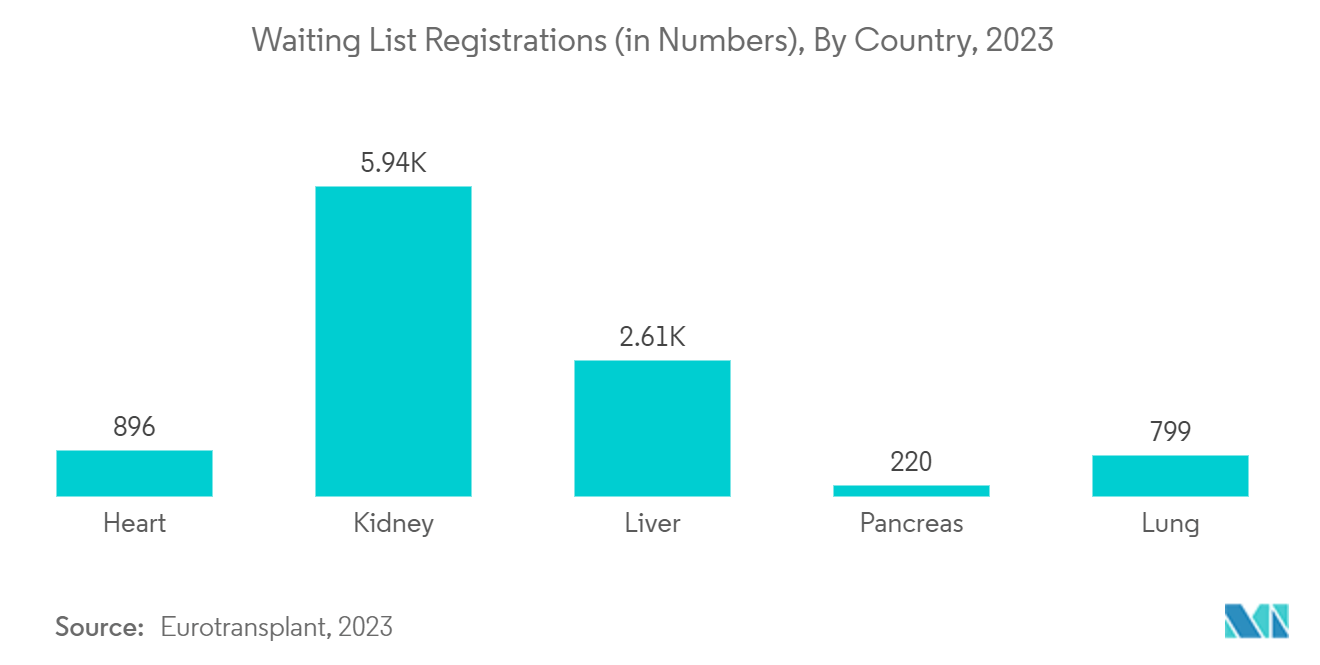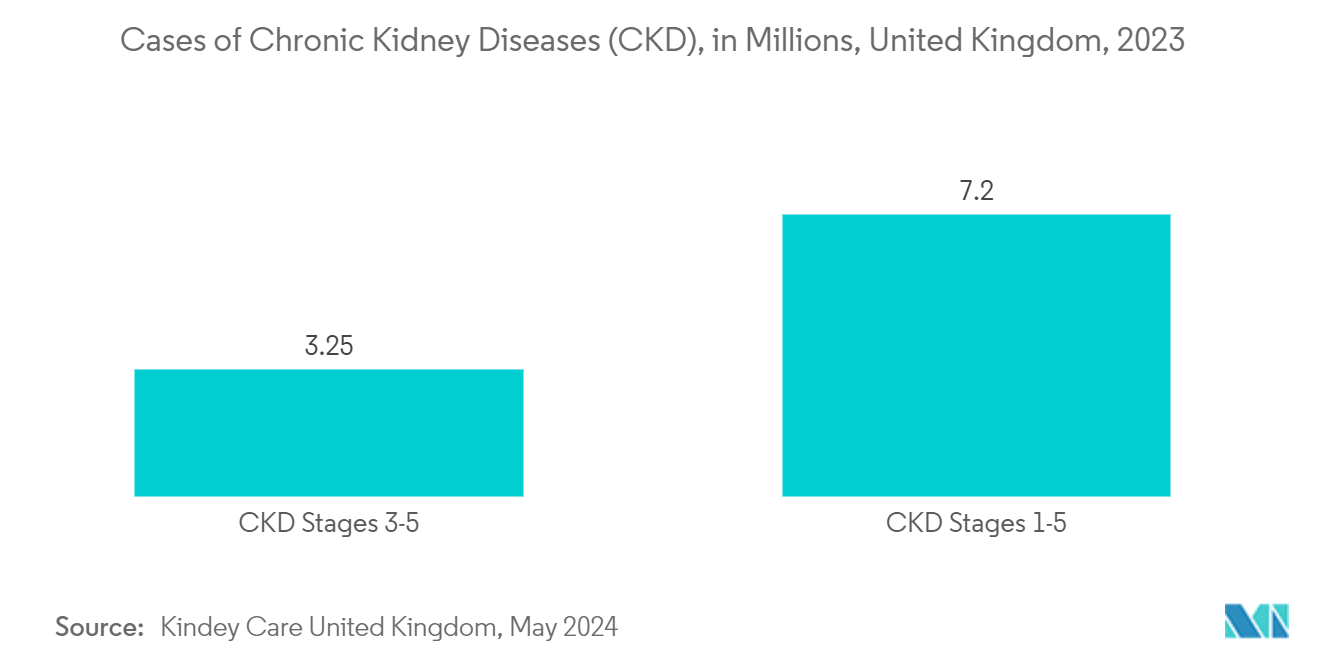Market Trends of Europe Artificial Organs And Bionic Implants Industry
The Artificial Kidney Segment is Expected to Register Significant Growth During the Forecast Period
An artificial kidney is a wearable dialysis machine. An individual with end-stage renal disease may use one daily or even continuously. The increasing incidence and prevalence of renal failures in Europe are expected to drive the segment's growth.
Kidney disease has become a burden that is leading to kidney failure and causing a significant healthcare concern in the region in recent years. For instance, the 2023 International Society of Nephrology (ISN) Global Kidney Health Atlas (ISN-GKHA) reported that the prevalence of chronic kidney disease (CKD) in Western Europe reached 10.6% in 2023, slightly exceeding the global median. Thus, the burden of CKD is expected to create demand for the adoption of artificial kidneys for patient survival, thereby fueling the segment's growth during the forecast period.
Furthermore, organ donation and transplantation remain the foremost and cost-effective clinical solutions for end-stage organ failure. For instance, in January 2023, NextKidney secured EUR 4.1 million (USD 4.5 million) through one of the largest crowdfunding efforts in a decade on Oneplanetcrowd. This substantial investment is set to revolutionize the lives of kidney patients by bringing the world’s first portable hemodialysis device, the Neokidney, to market. Hence, the increasing interest of the public and investors in technologies is driving the growth of the artificial kidney segment within the European artificial organs and bionic implants market.
In conclusion, innovations in artificial kidney structures, increasing funds, and the growing burden of chronic kidney diseases (CKDs) are expected to boost the growth of the market during the forecast period.

The United Kingdom is Anticipated to Contribute Significantly to the Market Growth
Among the other countries, the United Kingdom is anticipated to witness growth during the analysis period. Factors such as increasing disability and accidental injuries requiring amputations, such as limbs, fingers, and hands, are major contributors to the growth of the artificial organs and bionic implants market in the United Kingdom.
Aging, diabetes, and vascular diseases are all predicted to cause an increase in the number of amputations. Amputations are among the most destructive complications associated with diabetes, and the number of major lower limb amputations in diabetes is increasing in the country. As per the datasheet published in June 2022, a total of 7,957 major diabetic lower limb amputations were reported in a period of four years, and the cost of healthcare for ulceration and amputation in diabetes is approximately USD 1,230 million (GBP 1 billion) per year in the United Kingdom. Thus, the burden of lower limb amputations is expected to accelerate the growth of the artificial organs and bionic implants market in the country.
The UK healthcare industry is witnessing significant advancements in the market studied, driven by the integration of cutting-edge technologies to improve patient outcomes. For instance, in November 2023, the National Health Service announced that over 150,000 adults and children with type 1 diabetes in England and Wales will be offered an artificial pancreas, a groundbreaking device that uses a hybrid closed-loop system to automate insulin delivery based on real-time blood glucose readings. The device uses advanced algorithms to continuously monitor blood glucose levels and automatically administer the precise amount of insulin needed to maintain optimal levels.
Therefore, increasing adoption of such advanced technology in the United Kingdom is expected to drive the European artificial organs and bionic implants market.
In addition, according to the UK Parliament, in December 2023, organ donation activity fell severely in the region. The overall consent/authorization rate for organ donation dropped from 66% to 62% during 2022/23. A significant disparity was observed in consent rates between white patients (65%) and ethnic minority groups (35%). This increase in transplant waitlists signifies a substantial population of patients for whom traditional transplants are not readily available. This creates a market for artificial organs and bionic implants as patients seek alternative treatments, thereby driving the demand in the country.
Thus, due to the shortage of organs for transplantation, the demand for advanced artificial organs is increasing in the country, further fueling the overall market.


